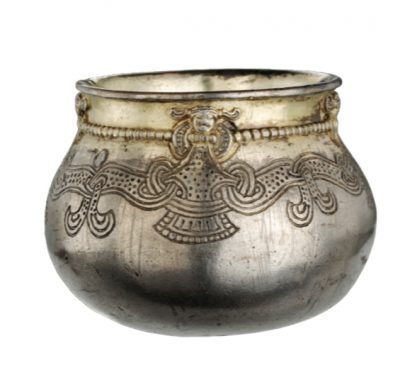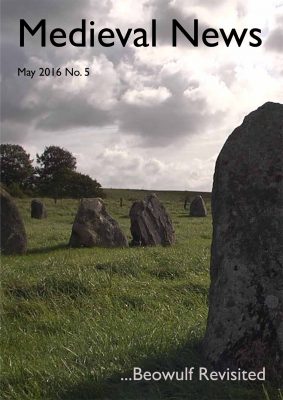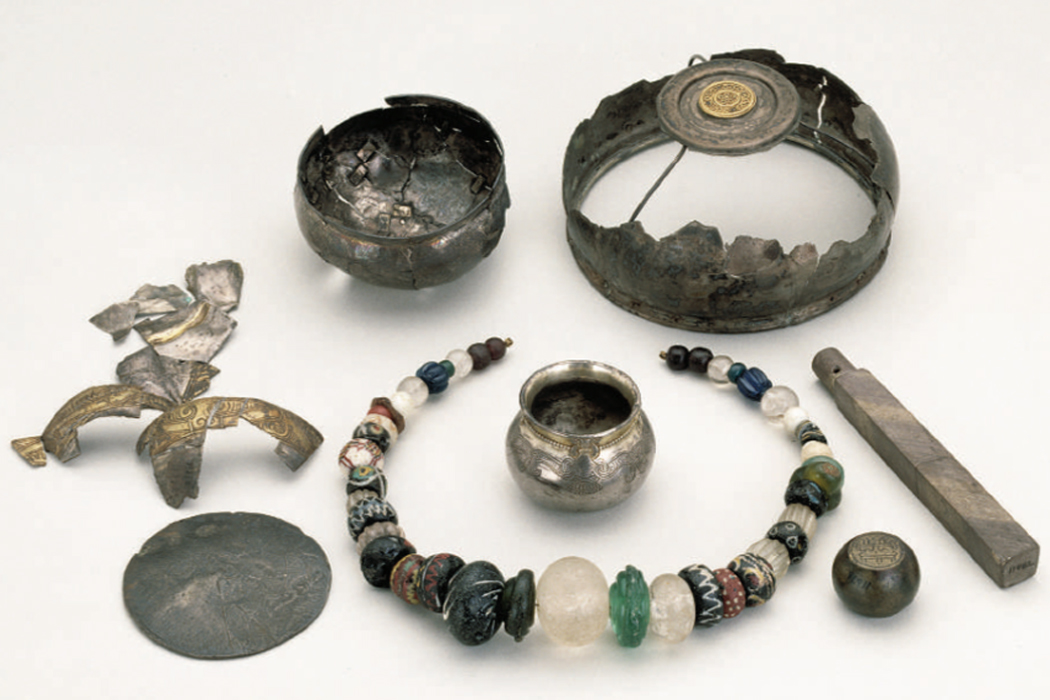The Viking hoard from Lejre from the end of the 10th century consists of spectacular items of an extraordinary quality

In 1850 an old peasant was clearing some shrubs on the hills behind the village of Gl. Lejre, when he discovered a hoard of silver cups and other valuables. He took them home and had them washed by his wife. As he was unsure of the value of the metal, he cut pieces out of one of the small bowls. Later he brought the hoard to a goldsmith in the city of nearby Roskilde. He, however, immediately called the police and the couple were arrested for breaking the ancient law concerning “Danefæ” according to which valuables found in the earth belonged to the King. The couple were afterwards sentenced to a short stint in the local prison and to pay a fine of 5 sovereigns. However, according to law they were also entitled to be refunded the metal value of the find, 34 sovereigns and 64 pennies (‘Rigsdaler’ and ‘skilling’).
The viking hoard was soon forgotten in the vast stores of the National Museum in Copenhagen. However, renewed exploration of the artefacts in the hoard by Thomas Christensen, leading archaeologist in Lejre, has yielded new information.
It appears that many of the artefacts are in fact rather spectacular. Such is the case of the largest of the bowls, which stems from an Anglo/Irish context and were fitted to hang. Obviously it was originally a liturgical vessel. It can be dated to the 8th century. The small solid cup of silver is also remarkable. Decorated with four winged female creatures in niello it is a remarkable piece of Scandinavian extraction. It is speculated that the winged figures represents Freya. Another find is the fragments of yet another cup, decorated in Mammen style. This dates the hoard to the same time as the newly found viking hoard from Ll. Karleby, the late 10th century. The peculiar silver plate may have functioned as a cover for one of the cups. To the hoard also belongs a group of very beautiful pearls made of glass, semi-precious rock and amber. Finally a whetting stone is peculiar. It probably stems from Sweden.
The hoard serves as an illustration of the remarkable milieu, which continued to set its mark on life in and around Lejre until the end of the halls around AD 1000.
SOURCE:
Lejreskatten
Af Tom Christensen
In: Danefæ. Skatte fra den danske muld. København 2010
READ MORE:
 ‘Medieval News’ from May 2016 brings you stories about Lejre in the land of the Scyldings and Beowulf, which is about to be unlocked. But it also shares a lot of notices about upcoming conferences, new books etc….
‘Medieval News’ from May 2016 brings you stories about Lejre in the land of the Scyldings and Beowulf, which is about to be unlocked. But it also shares a lot of notices about upcoming conferences, new books etc….
FEATURED PHOTO:
The Hoard from Lejre. © John Lee, Nationalmuseet.
